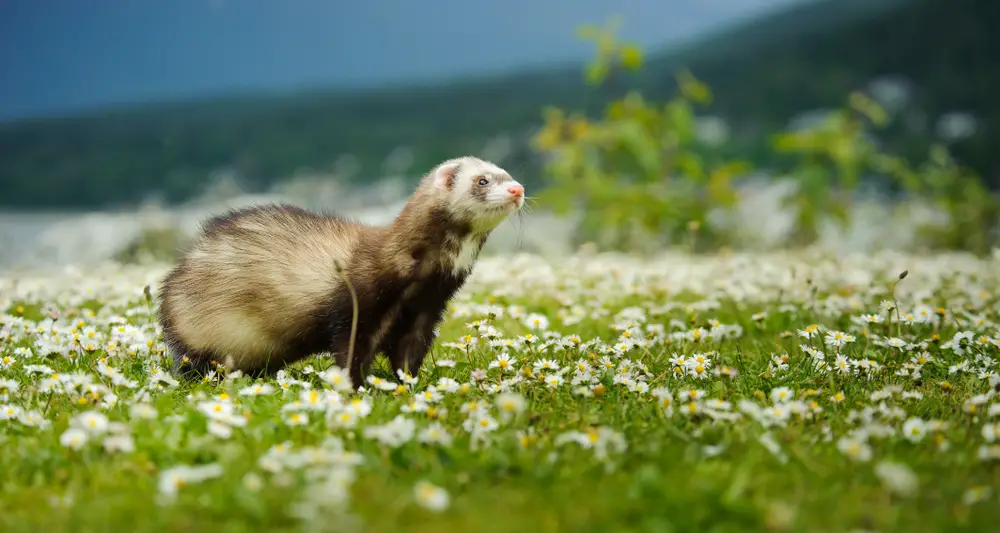
Ferrets live in the wild in Europe, Asia, and Africa. Black-footed ferrets still exist in the wild in North America but are listed as endangered. The small mammals weigh 1-5 pounds and are up to 18 inches long. Ferrets have a lifespan of 5-10 years or longer when domesticated.
Wild ferrets reuse tunnels built by other animals. They need about 120 acres of living space for adequate food resources. As nocturnal creatures, ferrets hunt for small mammals, birds, fish, and other meat to survive.
Ferrets are part of a family of mammals known as mustelids. The mustelid is a small carnivorous mammal known for its long bodies, short legs, and anal scent glands. Domesticated ferrets come in white, sable, black, and brown, and many combinations. Owners often have the scent glands removed in pet ferrets.
Table of Contents
- 1. Weasel
- 2. Badger
- 3. Otter
- 4. Marten
- 5. Skunk
- 6. Mink
- 7. Wolverine
- 8. Tayra
- 9. Polecats
- 10. Mongoose
- 11. Meerkat
- 12. Civet
- 13. Fossa
- 14. Fisher
- 15. Stoat
1. Weasel
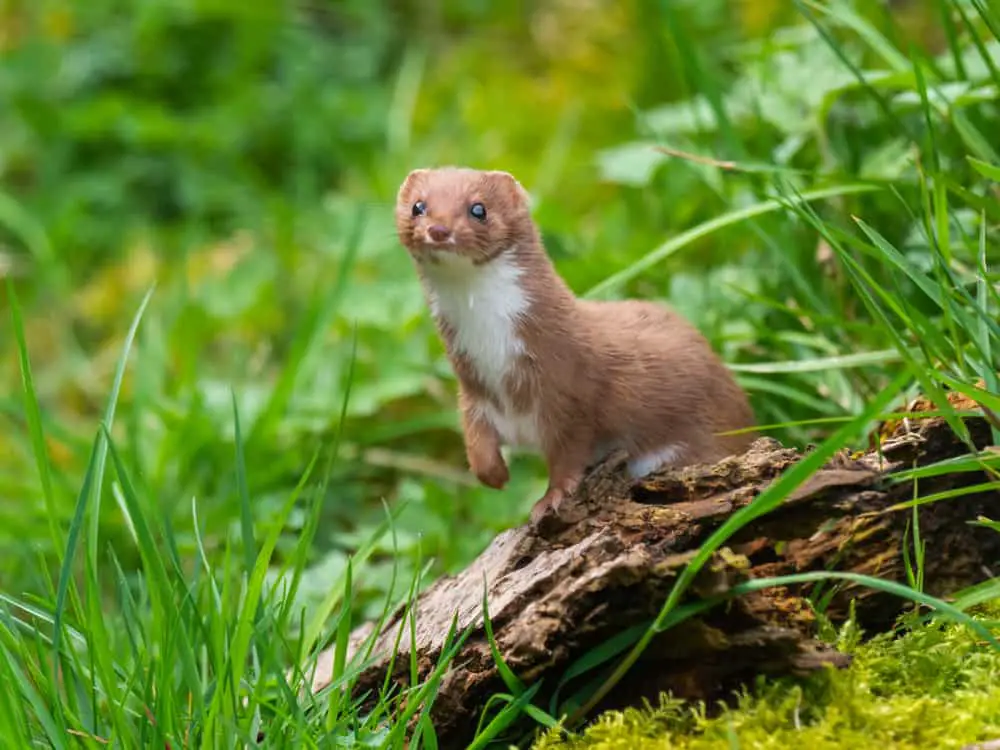
Weasels are also part of the mustelid family. They have brown, black, or gray coats, but all turn white in the winter. Weasels look like ferrets but are much smaller. They weigh between 1-12 ounces and are about 4-10 inches in length.
Weasels live in many parts of the world and enjoy a much larger variety of terrain than the ferret. The weasel will happily make their home in woodlands, riverbanks, meadows, and marshes. Weasels can dig a burrow for a home quickly. They do not rely on other animals to dig their tunnels but take over abandoned homes if one becomes available.
Some species of weasel can live ten years, but most will only survive 3-5 years. Weasels often have litters of up to a dozen babies (called kits) compared to the 1-6 kits born to ferrets. The weasel and ferret have gestation times of about one month.
2. Badger
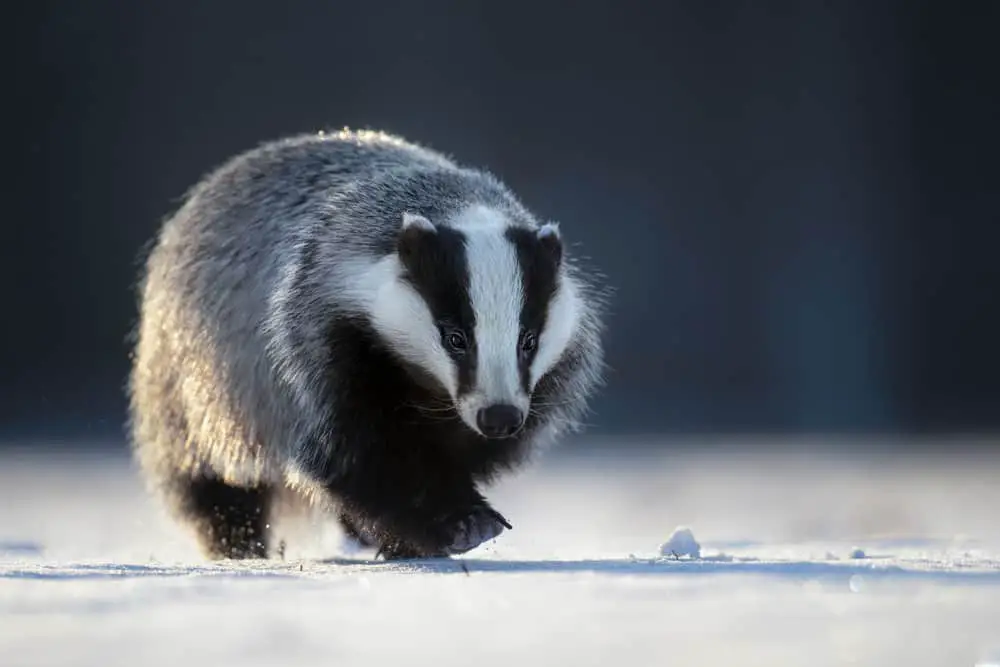
Badgers are from the same family as ferrets. They are bigger and can grow up to 36 pounds. The smallest is known as a ferret-badger. Larger breeds have stocky, muscular bodies, unlike the slinky ferret.
Badgers also live underground in elaborate tunnels and burrows they build. The animals often dig a new tunnel daily, so they never sleep in the same place each night. Badgers hunt small mammals for food but enjoy a meal of earthworms and slugs too.
Unlike ferrets and weasels, badgers will occasionally store their food in tunnels and hunt with other animals. Their hunting partners are sometimes other animals like coyotes. The willingness of badgers to befriend other animals is not limited to hunting. Badgers will share burrows with animals like skunks, foxes, rabbits, and more.
Badgers enjoy a variety of living spaces in the many countries where they thrive. Badger babies, called cubs, arrive in mid-winter. The average litter will include 1-5 cubs that remain underground until they reach eight weeks old.
3. Otter
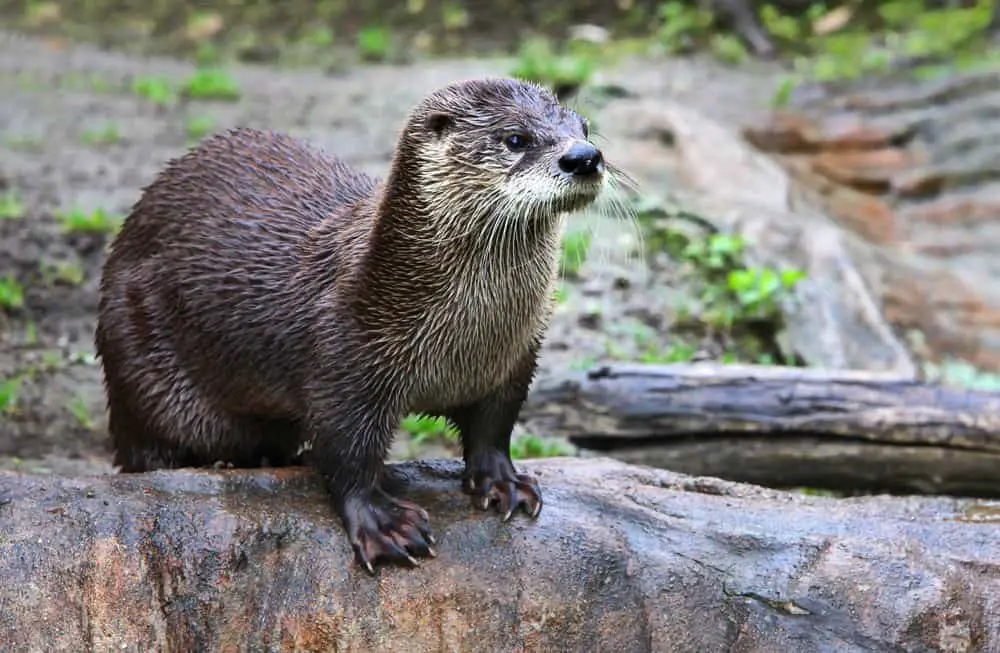
Otters live on every continent except Australia and Antarctica and need access to either salt or freshwater. The easygoing mammal prefers to make its home in tunnels in these areas but chooses pre-built tunnels, usually dug by beavers.
Otters have social personalities and live within groups called rafts. The carnivores will eat small mammals and birds but prefer marine creatures like snails, crabs, mussels, and fish and frogs. The nocturnal animals hunt for their food at night like other members of the mustelid family.
Sea otters always give birth to their 1-5 babies in water. River otters will give birth in their tunnels. The pups will open their eyes after one month and begin to swim at two months but will stay at mom’s side until they are a year old. Fully grown otters range from 2.9 feet long to 5.9 feet and weigh 11-90 pounds. Most live about 12 years in the wild and longer in captivity.
4. Marten
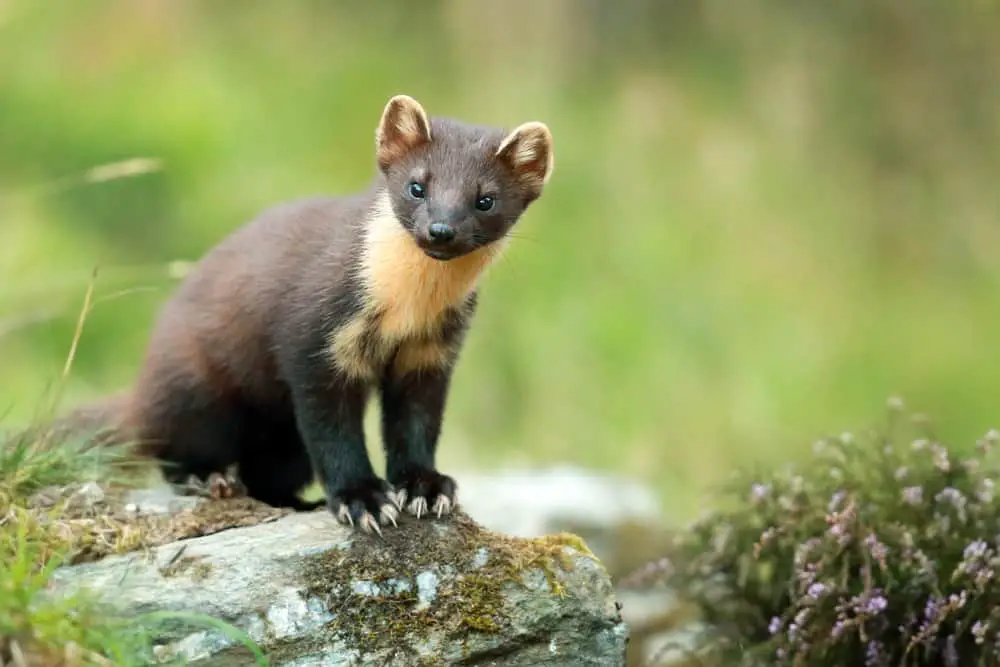
The marten lives in Europe and North America and has a similar body shape and size to ferrets. Martens have exceptional climbing skills and like to spend time hanging out in trees. Martens will sleep within hollows of trees or in tunnels and burrows dug by other animals. In the winter, they often sleep in tunnels near tree roots to keep warm.
The solitary mustelid prefers forested areas near water. Martens are excellent climbers and accomplished swimmers. The mammal can fully submerge to swim underwater. Excellent hunters, the marten will occasionally supplement its carnivorous diet with fruit.
Martens are 14-17 inches long and have a 7-9 inch tail. The furry animal has white or yellowish throat patches and a tan body with mahogany brown legs and tail. Some types of martens have gray or black fur instead of brown.
Summer breeders, the litters of kits born to martens include 1-5 babies. Gestation lasts for 28 days. The kits will wean at 43 days, at which point the mother leaves the burrow to allow the offspring to care for themselves.
5. Skunk
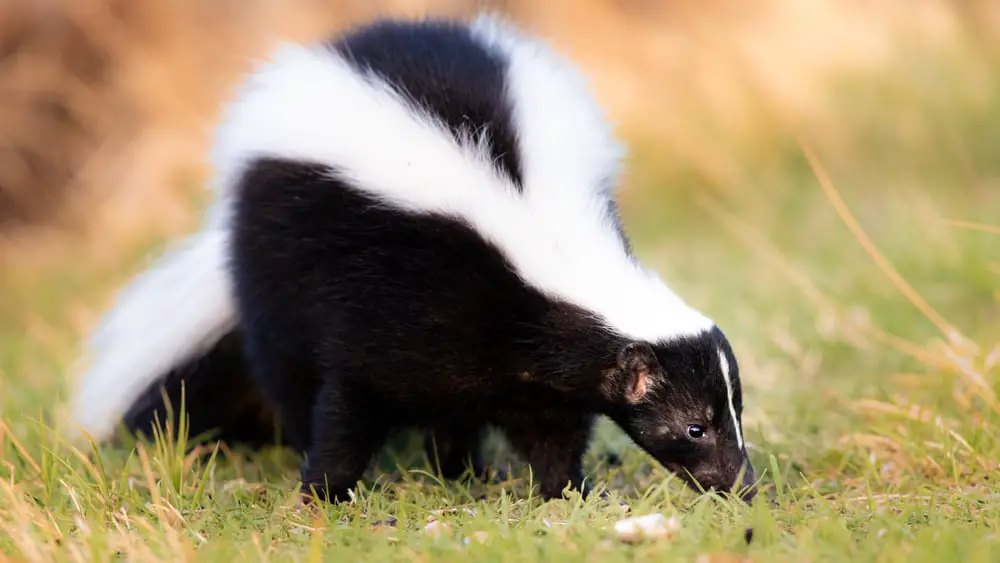
Long bodies, short legs, and smelly glands describe skunks perfectly, but they are not in the same family as ferrets. Skunks were part of the mustelid family, but genetic testing has them now classified in the Mephitidae family.
Skunks live in burrows they either find or prepare for themselves. The mammal loves to dig and will happily destroy lawns in the search for insects and earthworms. Skunks are omnivores that grow to about the same size as an average housecat.
It is legal in the United Kingdom and in 17 US states to keep skunks as pets. In the US, domesticated skunks have their scent glands removed. The UK does not allow surgical removal of the scent glands.
Females produce 2-12 kits each year after a 66-day gestation. The babies wean at two months and leave their mother after one year when they are mature enough to mate. Domesticated skunks live about ten years, and those in the wild have a lifespan of 7 years.
6. Mink
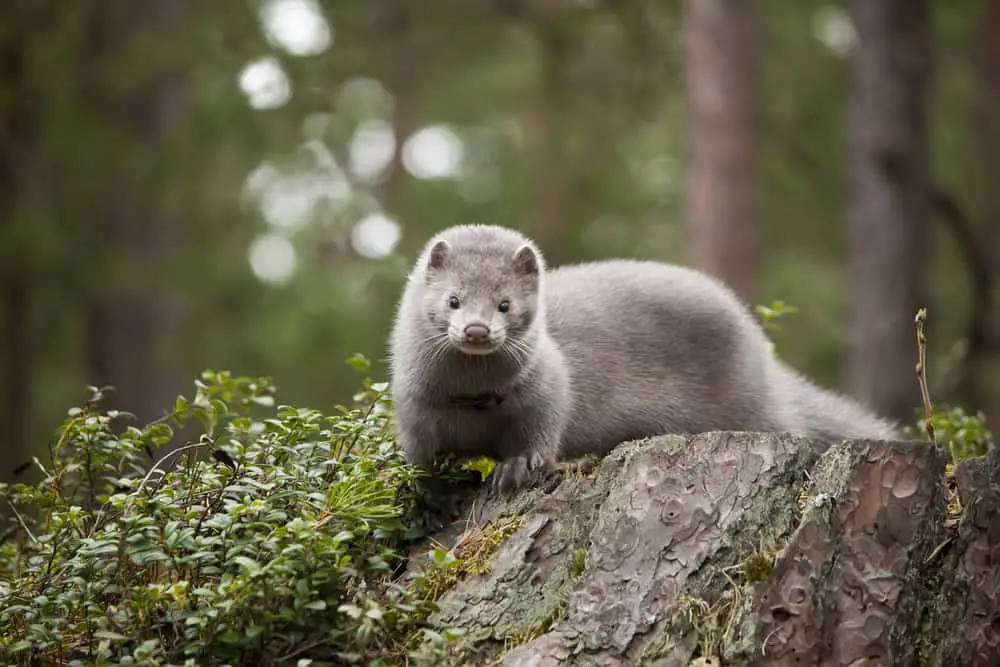
Similar in appearance to ferrets, minks are best known for their luxurious fur. Minks grow from about one pound to 3.5 pounds and grow up to 15 inches long. Minks prefer to live in hollow logs near waterways and can swim up to 100 feet underwater. The furry animal often adds leaves and grass to their dens for warmth and comfort.
Minks live solitary lives and prefer to stay active during the day. Minks kill and eat other mammals, fish, snakes, and frogs and store any excess food for later consumption.
The gestation period for minks lasts about two months, and litters are 1-8 kits. The kits wean by ten weeks but remain with their mother until they are 6-10 months old. Minks live about ten years.
7. Wolverine
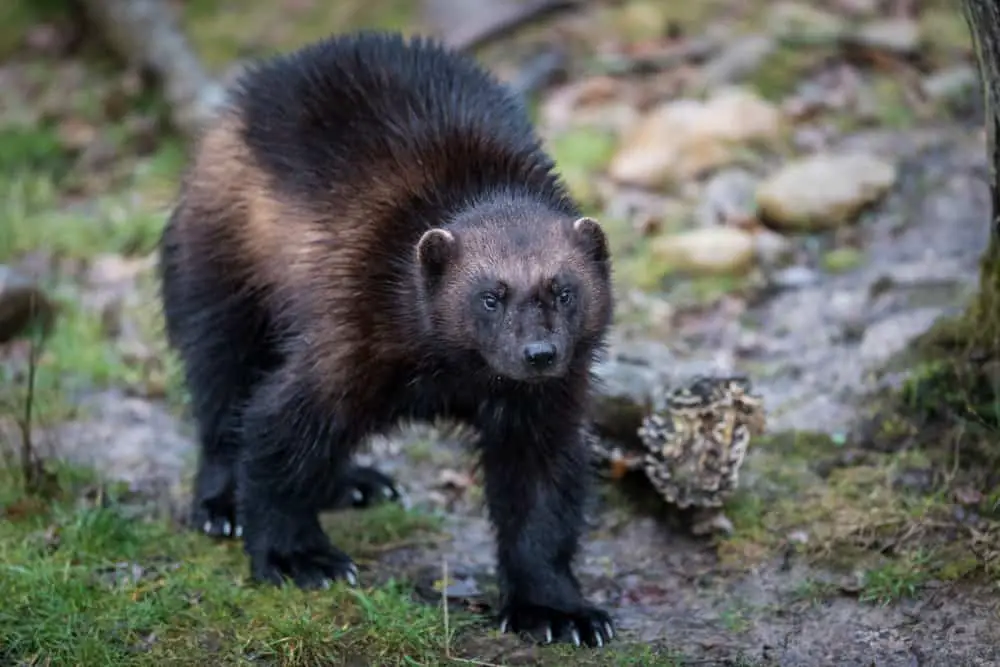
Wolverines look nothing like ferrets and more like a combination of a bear or dog and a skunk. Despite its appearance, it is still a member of the weasel family and shares much with the ferret. The animal is 20-24 inches when fully grown with a 7-10 inch tail. Wolverines can weigh 24-40 pounds.
Wolverines are ambitious animals with powerful senses of smell. They will travel 15 miles in 24 hours on a hunt and have the ability to smell their prey under 20 feet of snow. Wolverines will dig out tunnels and burrows to kill and eat hibernating animals.
Wolverines do not stalk and kill only small animals like many in the mustelid family but will take on mountain goats and even caribou and moose. The strong jaws of wolverines allow them to consume the bones and teeth of the prey they kill.
Wolverines generally live in colder climates and store their leftover food in snow brought into their den. The males mark their territory, a range of up to 372 miles, and only share the area with females. Females deliver only one or two babies at a time in late winter or early spring. The kits often stay with their mother until they can reproduce at about two years old. Wolverines live about 7-12 years.
8. Tayra
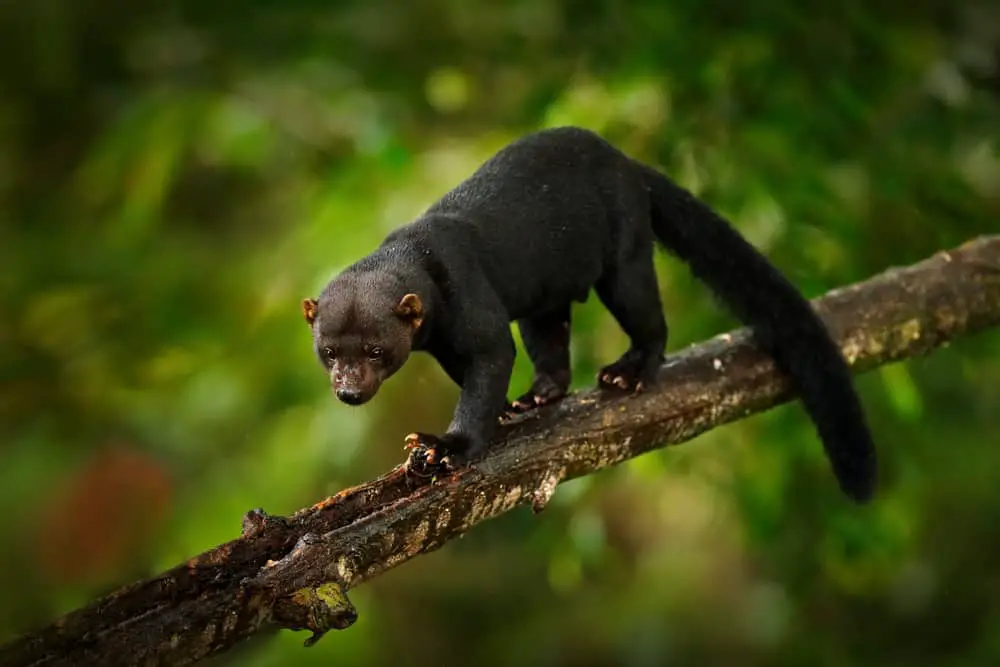
Another member of the Mustelid family is the tayra. Tayras live in forested parts of Central and South America. The small mammal has deep brown or black fur and a body shape similar to a ferret but with longer legs. The tayra is active during the day or night and may travel in groups, pairs, or alone.
Tayras live in burrows or hollowed tree trunks and can travel nearly four miles in a night. Alone, the animals often stay silent but will communicate when traveling together.
The tayra has poor eyesight but a keen sense of smell and can run and climb quickly. The mammals grow up to 15 pounds and are about two feet long. In the wild, tayras live up to 18 years. The omnivorous creature eats small mammals and birds as well as fruit and honey.
Gestation lasts for 63-67 days and results in litters of 1-3 babies. The babies will open their eyes within 47 days and leave their den with their mother at this point. Weaning takes place in 100 days. The animal will begin to hunt shortly after weaning. Mothers bring injured prey to the babies for practice. They become independent at about six months old.
9. Polecats
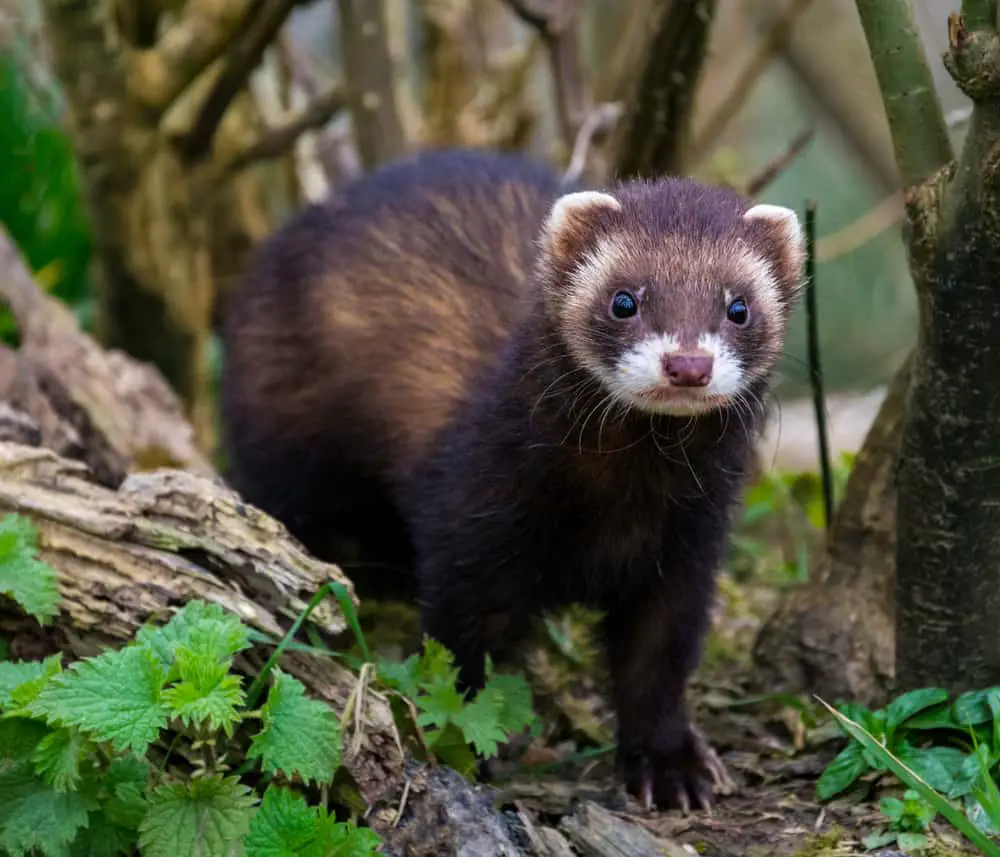
The polecat is a mustelid that looks nearly identical to the ferret or weasel. The dark brown fur of the polecat becomes silvery white in winter. Polecats are known as the wild ancestor to the ferret and were once common throughout Britain but were hunted nearly to extinction.
Adult polecats can measure 21 inches and weigh nearly four pounds. Polecats often live around farms, wetlands, and woodlands. The mammal is carnivorous and prefers to dine on eels, trout, and frogs. Polecats will also eat rabbits, birds, and insects.
Female polecats have large litters of up to 10 babies. The babies will begin eating meat at one month, even before they wean. The babies start to follow their mother out of the nest at this time to explore. At three months old, the young will go off on their own.
10. Mongoose
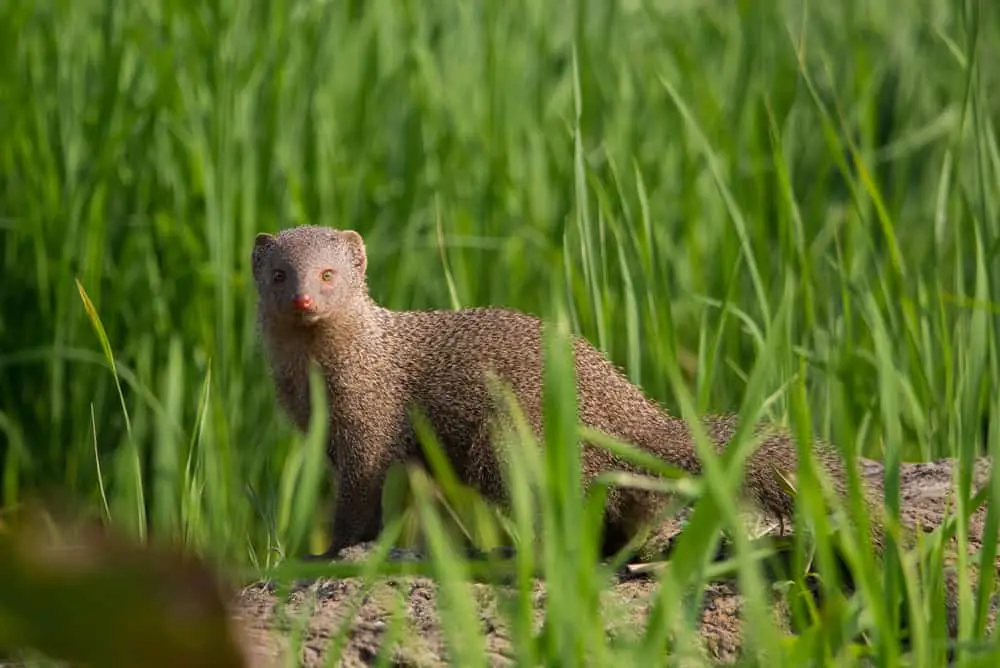
The mongoose looks like a ferret, but it is not a mustelid. Instead, the small mammal shares its origins with cats. The long and low profile of the mongoose makes it easy to mistake as a type of ferret or mink. Mongooses range from 7-inches to two feet in length and weigh between 11 ounces and 10 pounds.
Other than appearance, the mongoose has little in common with the ferret. Mongoose species live in Africa, southern parts of Asia, and the Caribbean, and Hawaii. The Caribbean and Hawaiian mongoose were not native to these areas. Mongooses often live and hunt in packs and are active during the day. The animals talk excessively to each other throughout the day. Some of the sounds made resemble human speech.
The mongoose is an omnivore that consumes small mammals, birds, and eggs. It also eats fruit, nuts, and berries, and seeds. Researchers have witnessed mongooses cracking eggs on rocks to eat them without the shell.
Breeding remains in question as mongooses have been difficult to monitor. The animals give birth to 1-4 offspring after approximately 42-105 days of gestation. The pups take 9-24 months to mature and leave their mother. The mammal lives 6-10 years in the wild.
11. Meerkat
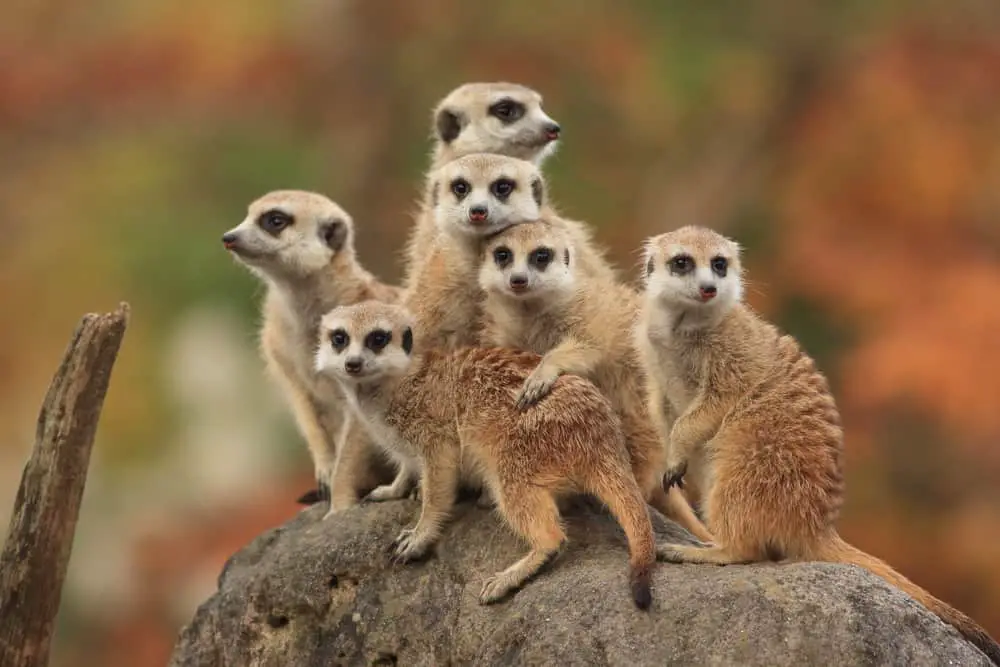
Meerkats look like ferrets but are a type of mongoose. The delicate creatures are 9 to 11.5 inches long and weigh 1 -2 pounds. The light brown fur of the meerkat includes deep brown patches around the eyes that offer protection from the sun.
The animals typically live in hot, arid climates and do not need to drink water to survive. Most of the moisture they receive comes from the plants and fruit they eat.
Like ferrets, meerkats live in burrows and deliver their litter inside. Meerkats, however, dig their tunnels. The ears of the meerkat close when they tunnel, and the eyes have a special membrane to protect their vision.
The social meerkat lives in packs known as mobs that can number 40 animals. Gestation lasts ten weeks with litters of pups consisting of 8-10 babies. Most females have several litters each year. Births take place between November and March.
The eyes of the babies will open at two weeks. At three weeks, they start solid food. The pups are fully weaned at nine weeks and can reproduce at 1.5 years.
Unlike many other animals, meerkats often supervise the litters of other mothers while she searches for food. Meerkats live for eight years in the wild and 13 years in captivity.
12. Civet

Civets are closely related to the mongoose. Civets have many non-ferret-like features like a stocky body that can weigh up to 24 pounds. The creatures also live much longer, with an expected lifespan of up to 15-20 years.
Like the ferret, civets are mammals, nocturnal, and use scent glands to mark their territory. Perfume makers once prized the scent glands of some civets. Today synthetic versions of the scent help to protect the animal from extinction.
Civets hunt small mammals and birds like ferrets and consume worms, mollusks, tree roots, and fruit.
Arboreal animals, civets often sleep in trees rather than in tunnels. The elusive mammals have remained mysterious in many ways, including their reproduction habits. Experts believe that most civets breed throughout the year and have litters of 1-6 offspring. Gestation lasts from 60-81 days.
13. Fossa
The fossa shares some traits with the ferret and other features that match many different animals. It is a unique creature found only on the island of Madagascar. Scientists still do not know much about the mysterious animal and have little information about their reproduction cycle. What is known is that they breed very slowly and are an endangered species.
The similarities between the ferret and the fossa include its length of about 15 inches, although some grow to 30 inches. The fossa is a mammal that has scent glands to mark its territory and are long and slinky animals with bodies that are low to the ground. The wedge-shaped head closely resembles the shape of a ferret head.
The fossa is a solitary carnivore known as one of the top predators in Madagascar.
The fossa differs from the ferret by being a tree-dwelling creature with a long tail used as a rudder when jumping from tree to tree like a monkey. The ankles of the fossa are double-jointed like squirrels to enable them to climb headfirst down trees.
14. Fisher
A member of the mustelid family that looks like an overgrown ferret is the fisher. Weighing about 12 pounds and growing nearly 3.5 feet long, the fisher has a brown coat with a fluffy tail. The nocturnal animal does not hibernate and divides its time between the trees and the ground.
Fishers live only in North American. They prefer forests and areas with good ground cover and will avoid cleared areas to remain hidden. The fisher uses ground cover and hollowed logs for dens. The small mammals are omnivores that most often dine on birds and small mammals, but they will eat fruit and truffles.
Females deliver from February to April with a gestation period of about two months. Litters are of 1-4 kits that will wean by ten weeks of age. Kits leave and choose their territories after one year. Fishers live about ten years.
15. Stoat
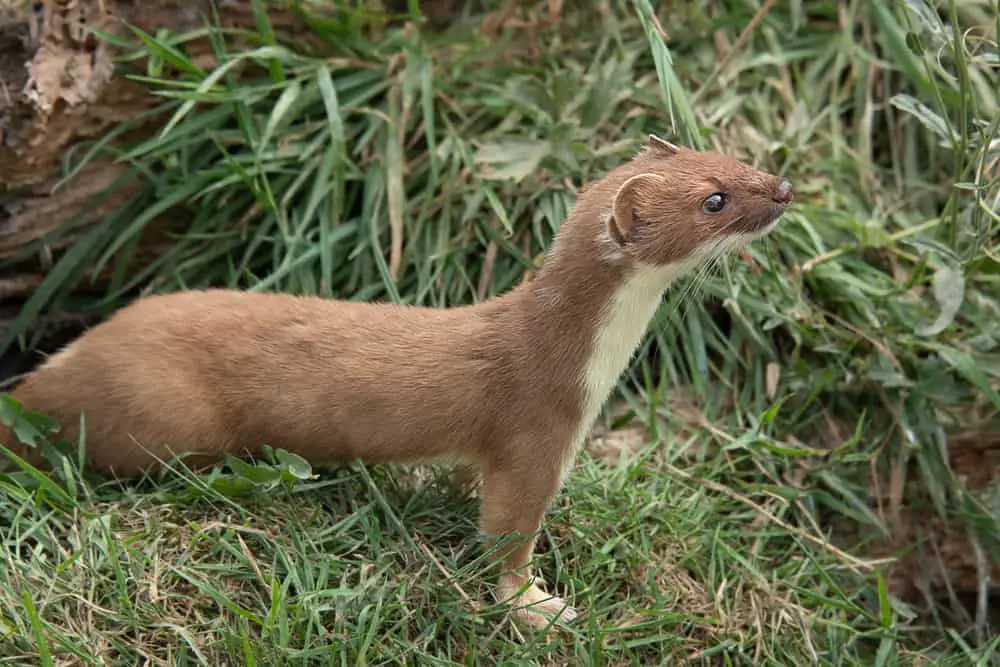
The Stout is a mustelid and is also known as the short-tailed weasel or an ermine. The stoat is native to Eurasia and North America.
Stoats grow to about 8 pounds and are around 11 inches long. The fur is a light brown with a lighter shade on the chest and belly and a black-tipped tail. Stoats that live in northern climates will typically turn white during winter.
The stoat can swim and climb trees. They have strong legs, a powerful sense of smell, and excellent eyesight. The animals communicate with each other using their scent glands but are typically solitary animals.
Stoats live in hollowed tree trunks, rock crevices, and burrows. Stoat babies arrive in April or May after an 11-month gestation. About 5-12 kits are in each litter. They will hunt prey in 12 weeks after birth. Most stoats live only 1-1.5 years due to predators and eradication efforts, but the animal can survive up to 7 years.



